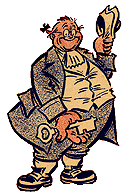 |
Return to Pa Pitt's Master Index |
"We're finding material that we didn't even know
existed."
--Comment of a visiting teacher to her class.
Introduction.
Thanks, in no small part, to the popularity of Alex Haley's genealogical investigations, embodied in his novel and in the mini-series Roots, the Pennsylvania Department now spends at least 70% of its time "doing Genealogy." The remaining 30% is divided between Local History--often inextricable from Genealogy, requests for company information (current & historical), and for demographic portraits of Western Pennsylvania.The key lesson for the advanced (as well as the beginning) researcher is to Ask the Librarian. This may seem obvious, but it is the nature of this unique collection to be like the World Wide Web itself: chock full of links that connect topics to one another. In the Pennsylvania Department, it is the librarians, possessing a knoweldge of the intricacies of the collection, who can make these connections or help you in making them.
What follows is a series of examples that may assist you in understanding how best to approach your research and, to a small degree, acquaint you with some of the Department's resources.
Example 1. Exploring a Community and Making Connections.
- Resources to Use:
- Books.
- CAROLINE.
- Census.
- Maps.
- Pennsylvania Department Websites.
- Pittsburgh City Directories.
- Pittsburgh Photographic Library (PPL).
- Vertical Files.
- Where Else to Look:
- Mount Washington Branch, Carnegie Library of Pittsburgh.
- Pittsburgh History & Landmarks Foundation
- Senator John Heinz Pittsburgh Regional History Center
- University of Pittsburgh Libraries & Collections
Example 2. Tracking Down a Notable Person.
Resources to Use:
Where Else to Look:Example 3. Tracking Down a Laborer.
Resources to Use:
Where Else to Look:Example 4. Tracking Down the History of a Company or Business.
Resources to Use:
Where Else to Look:
 |
Return to Pa Pitt's Master Index |
 |
 |
 |
 |
 |